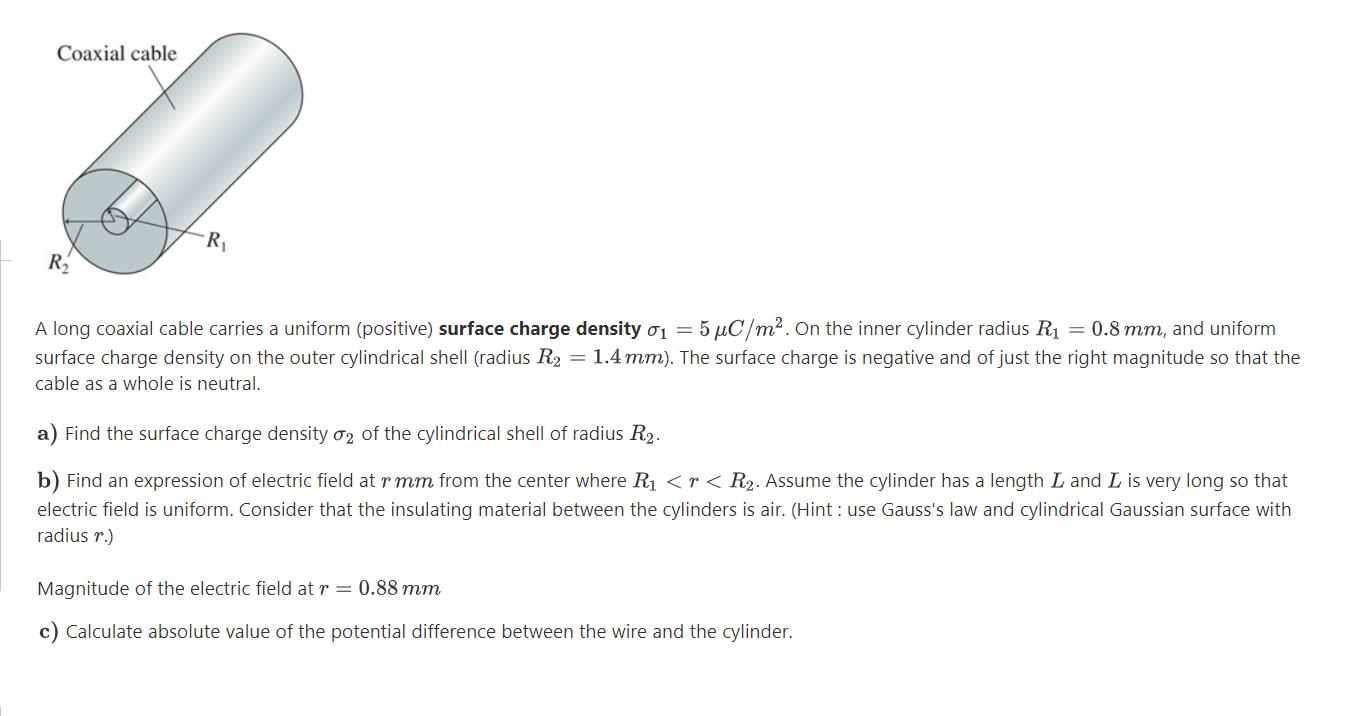Coaxial cable A long coaxial cable carries a uniform (positive) surface charge density o1 = 5 µC/m². On the inner cylinder radius R1 = 0.8 mm, and uniform surface charge density on the outer cylindrical shell (radius R2 = 1.4 mm). The surface charge is negative and of just the right magnitude so that the cable as a whole is neutral. a) Find the surface charge density ơ2 of the cylindrical shell of radius R2. b) Find an expression of electric field at r mm from the center where R1
Coaxial cable A long coaxial cable carries a uniform (positive) surface charge density o1 = 5 µC/m². On the inner cylinder radius R1 = 0.8 mm, and uniform surface charge density on the outer cylindrical shell (radius R2 = 1.4 mm). The surface charge is negative and of just the right magnitude so that the cable as a whole is neutral. a) Find the surface charge density ơ2 of the cylindrical shell of radius R2. b) Find an expression of electric field at r mm from the center where R1
Related questions
Question

Transcribed Image Text:Coaxial cable
A long coaxial cable carries a uniform (positive) surface charge density o1 = 5 µC/m². On the inner cylinder radius R1 = 0.8 mm, and uniform
surface charge density on the outer cylindrical shell (radius R2 = 1.4 mm). The surface charge is negative and of just the right magnitude so that the
cable as a whole is neutral.
a) Find the surface charge density ơ2 of the cylindrical shell of radius R2.
b) Find an expression of electric field at r mm from the center where R1 <r< R2. Assume the cylinder has a length L and L is very long so that
electric field is uniform. Consider that the insulating material between the cylinders is air. (Hint : use Gauss's law and cylindrical Gaussian surface with
radius r.)
Magnitude of the electric field at r = 0.88 mm
c) Calculate absolute value of the potential difference between the wire and the cylinder.
Expert Solution
This question has been solved!
Explore an expertly crafted, step-by-step solution for a thorough understanding of key concepts.
This is a popular solution!
Trending now
This is a popular solution!
Step by step
Solved in 6 steps with 7 images
